Ankle Ligament
Table of Contents
Introduction
Ankle ligaments are tough bands of tissue that connect bones to other bones in the ankle joint, providing stability and support. Common types of ankle ligament injuries include sprains, strains, and tears, which can cause pain, swelling, stiffness, and difficulty moving the affected joint. Diagnosis may involve a physical exam, imaging tests, or arthroscopy.
Treatment options include rest, physical therapy, surgery, or other medical interventions. To prevent ankle ligament injuries, it is important to maintain good physical fitness, warm up properly before exercise or sports activities, wear appropriate protective gear, and use proper techniques when performing physical activities.
Ligaments of the Ankle Joint
The ankle joint is made up of several ligaments that provide stability and support to the joint. These ligaments include:
- Anterior talofibular ligament (ATFL): As discussed earlier, the ATFL is located on the outer side of the ankle and connects the talus bone to the fibula bone. It prevents excessive inversion (inward rolling) of the ankle joint.
- Posterior talofibular ligament (PTFL): The PTFL is located on the backside of the ankle and connects the talus bone to the fibula bone. It prevents excessive eversion (outward rolling) of the ankle joint.
- Calcaneofibular ligament (CFL): The CFL is located on the outer side of the ankle and connects the calcaneus bone to the fibula bone. It provides lateral stability to the ankle joint.
- Deltoid ligament: The deltoid ligament is located on the inner side of the ankle and connects the tibia bone to the talus and calcaneus bones. It provides medial stability to the ankle joint.
- Syndesmosis: The syndesmosis is a group of ligaments that connect the tibia and fibula bones together. It provides stability to the ankle joint and prevents excessive rotation of the bones.
Injuries to these ligaments can cause pain, swelling, and instability in the ankle joint. Treatment for ankle ligament injuries typically involves rest, ice, compression, and elevation (RICE), as well as physical therapy to strengthen the muscles around the ankle joint and improve the range of motion. In severe conditions, surgery may be needed to repair or reconstruct the damaged ligaments.
Functions of the ankle joint ligament
The ankle ligaments play a crucial role in stabilizing the ankle joint and supporting the weight of the body during movement. There are several ligaments in the ankle, including the calcaneofibular ligament, anterior talofibular ligament, posterior talofibular ligament, and deltoid ligament.
The calcaneofibular ligament is responsible for preventing excessive inversion (rolling inward) of the foot. The anterior talofibular ligament helps to prevent excessive plantarflexion (pointing downward) and inversion of the foot, while the posterior talofibular ligament prevents excessive dorsiflexion (pointing upward) and inversion of the foot. The deltoid ligament is responsible for preventing excessive eversion (rolling outward) of the foot.
Together, these ligaments work to provide stability to the ankle joint during weight-bearing activities such as walking, running, and jumping. They also help to absorb shock and distribute forces throughout the ankle and foot, reducing the risk of injury to the bones and other structures in the lower leg.
so in the end, ankle ligaments are essential for maintaining stability and preventing injury during weight-bearing activities. It is important to take precautions to avoid injury, such as wearing appropriate footwear and using proper technique during exercise and sports activities.
Injuries of ankle joint ligament
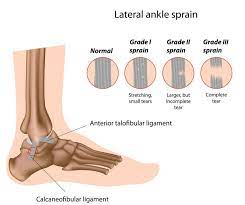
Ankle ligament injuries are common and can occur due to a sudden twist or turn of the foot, or from repetitive stress on the ligaments. The severity of the injury can vary from a mild sprain to a total tear of the ligament.
Mild Ankle sprains occur when the ligament is stretched or partially torn, causing pain, swelling, and stiffness in the ankle. Treatment for mild sprains typically involves rest, ice, compression, and elevation (RICE), as well as physical therapy exercises to restore strength and range of motion to the ankle.
Moderate sprains occur when the ligament is partially torn, causing more severe pain, swelling, and instability in the ankle. Treatment for moderate sprains may involve immobilization of the ankle with a brace or cast, as well as physical therapy exercises to restore strength and range of motion to the ankle.
Severe sprains occur when the ligament is completely torn, causing significant pain, swelling, and instability in the ankle. Treatment for severe sprains may involve surgery to repair or reconstruct the damaged ligament, followed by physical therapy exercises to restore strength and range of motion to the ankle.
Repetitive stress on the ankle ligaments can also lead to chronic ankle instability, which is characterized by frequent episodes of ankle sprains and instability. Treatment for chronic ankle instability may involve physical therapy exercises to improve strength and balance in the ankle, as well as bracing or surgery in severe cases.
Overall, ankle ligament injuries can be painful and debilitating, but with proper treatment and rehabilitation, most people are able to fully recover and return to their normal activities. It is important to seek medical attention if you experience pain or instability in your ankle, as early intervention can help prevent further damage and speed up the healing process.
Test for ankle joint ligament
- Anterior drawer test
- Talar tilt test
- Squeeze test
- External rotation stress test
Anterior drawer test
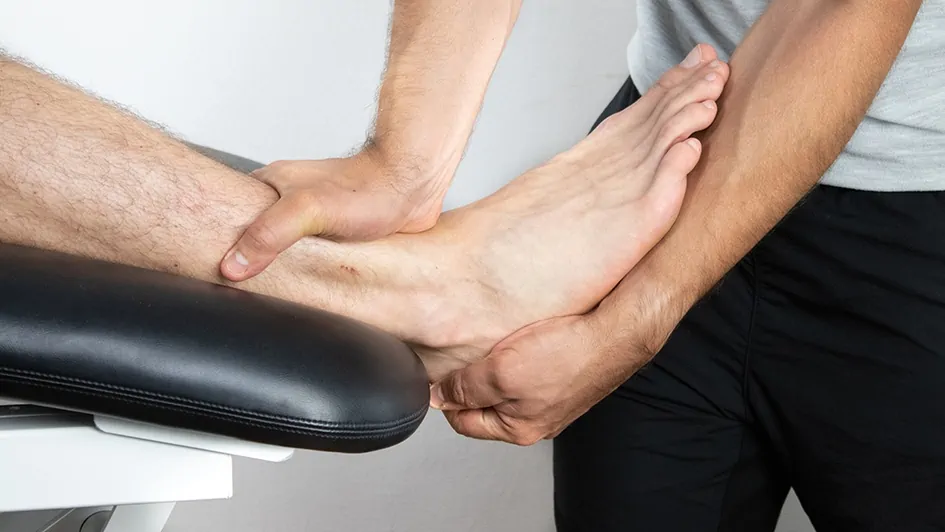
The anterior drawer test is a diagnostic test used to evaluate the stability of the anterior talofibular ligament (ATFL) in the ankle joint. This ligament is located on the lateral side of the ankle and is responsible for preventing excessive forward movement of the foot relative to the lower leg.
To perform the test, the patient lies on their back with their knee bent and foot flat on the table. The doctor provide stabilizes the lower leg with one hand and grasps the heel with the other hand. They then pull the foot forward, applying pressure to the ATFL. The amount of forward movement or laxity in the joint is assessed and compared to the unaffected ankle.
If there is significant forward movement or laxity in the joint, it may indicate a partial or complete tear of the ATFL. This type of injury is common in ankle sprains, particularly those that involve inversion or rolling of the ankle.
The results of the anterior drawer test can help guide treatment options. If there is significant laxity, surgical intervention may be necessary to repair or reconstruct the damaged ligament. On the other hand, if there is minimal or no laxity, conservative treatment options such as physical therapy or bracing may be recommended.
Talar tilt test
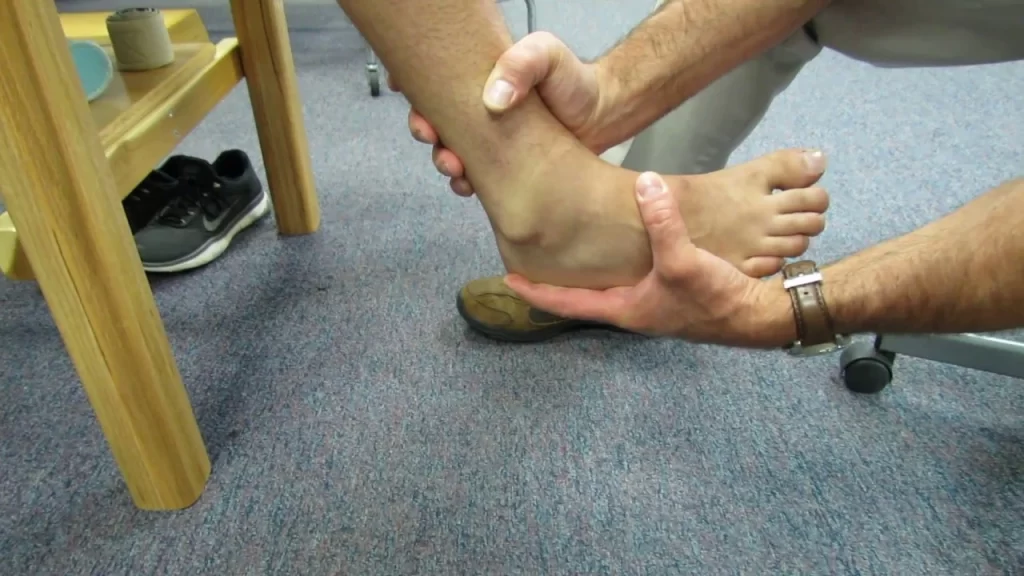
The Talar tilt test is another diagnostic test used to evaluate the stability of the ankle joint, specifically the calcaneofibular ligament (CFL) and the talofibular ligament (TFL). These ligaments are located on the lateral side of the ankle and are responsible for preventing excessive inversion or rolling of the foot.
To perform the test, the patient lies on their back with their knee bent and foot flat on the table. The healthcare provider stabilizes the lower leg with one hand and grasps the heel with the other hand. They then tilt the foot inward (inversion) and outward (eversion) while applying pressure to the ankle joint.
The amount of movement or laxity in the joint is assessed and compared to the unaffected ankle. If there is significant movement or laxity, it may indicate a partial or complete tear of the CFL or TFL.
The results of the Talar tilt test can help guide treatment options. If there is significant laxity, surgical intervention may be necessary to repair or reconstruct the damaged ligament. On the other hand, if there is minimal or no laxity, conservative treatment options such as physical therapy or bracing may be recommended.
It is crucial to take in mind that both the anterior drawer test and Talar tilt test should be performed by a trained medical provider and interpreted in conjunction with other diagnostic tests and clinical findings.
Squeeze test
The Squeeze test is a diagnostic test used to evaluate for the presence of a syndesmotic injury, also known as a high ankle sprain. This type of injury occurs when there is damage to the syndesmotic ligaments that connect the tibia and fibula bones in the lower leg.
To perform the Squeeze test, the patient is positioned lying on their back with their knee bent and foot flat on the table. The healthcare provider then applies pressure to the lower leg just above the ankle joint, squeezing the tibia and fibula bones together.
If the patient experiences pain or discomfort in the area of the syndesmosis, it may indicate a syndesmotic injury. This pain may be felt in the ankle joint, along the length of the fibula bone, or in the lower leg.
The Squeeze test is often performed in conjunction with other diagnostic tests, such as X-rays or MRI, to confirm a diagnosis of a syndesmotic injury. Treatment options for this type of injury may include immobilization with a cast or brace, physical therapy, or surgical intervention.
It is very necessary to take in mind that the Squeeze test should only be performed by a trained medical provider and interpreted in conjunction with other diagnostic tests and clinical findings.
External rotation stress test
The external rotation stress test is a diagnostic test used to assess the integrity of the knee joint’s lateral collateral ligament (LCL). It helps determine if there is any damage or instability in this ligament.
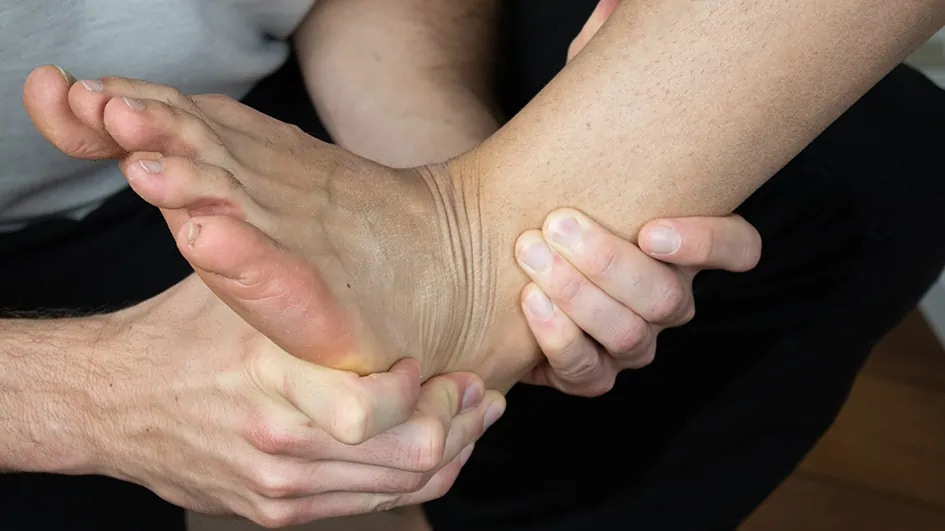
To perform the external rotation stress test, the patient typically lies down on an examination table or sits on the edge of a table with their legs hanging freely. The examiner stands on the affected side.
The examiner then grasps the patient’s foot and ankle firmly with one hand, providing stabilization and preventing any movement from occurring at the ankle joint. The other hand is placed on the outer side of the knee, just above the joint line.
The test begins with the examiner gently flexing the patient’s knee to about 30 degrees. This flexion position helps relax the hamstring muscles and reduces their influence on the test results. It also aligns the lateral collateral ligament in a taut position for better assessment.
Next, the examiner applies an external rotational force to the patient’s lower leg while simultaneously applying a slight inward pressure on the lateral side of the knee with their hand. This rotational force aims to stress and evaluate the LCL.
During this process, the examiner carefully observes and feels for any excessive movement or laxity in the knee joint. If there is a tear or injury to the LCL, it may result in increased joint laxity, causing the knee to move more than normal during external rotation.
The test is considered positive if there is pain, excessive movement, or a feeling of instability in the knee joint during external rotation. These findings may indicate a partial or complete tear of the LCL.
It is very crucial to take in mind that the external rotation stress test should be performed by a trained healthcare professional who can accurately interpret the results. False positives or negatives can occur due to various factors, such as muscle guarding, patient discomfort, or improper technique.
Treatment of ankle ligament
The treatment of ankle ligament injuries depends on the severity of the injury. The following are some of the common treatments for ankle ligament injuries:
- Rest, ice, compression, and elevation (RICE): This is the initial treatment for mild ankle sprains. Resting the ankle reduces stress on the ligaments and promotes healing. Ice helps to reduce swelling and pain. Compression with an elastic bandage or brace helps to reduce swelling and provide support to the ankle. Elevating the ankle above the heart level helps to reduce swelling.
- Physical therapy: Physical therapy exercises help to restore strength, flexibility, and range of motion to the ankle. A physical therapist may recommend exercises such as ankle stretches, strengthening exercises, and balance training.
- Medications: Over-the-counter pain relievers such as ibuprofen or acetaminophen can be useful to decrease pain and inflammation.
- Bracing or casting: Moderate to severe ankle sprains may require immobilization with a brace or cast to allow the ligaments to heal.
- Surgery: In severe cases where the ligament is completely torn, surgery may be required to repair or reconstruct the ligament.
- Rehabilitation: After treatment, rehabilitation is necessary to restore full function to the ankle. This may involve physical therapy exercises, bracing, or casting.
It is very crucial to seek medical attention if you experience pain or instability in your ankle. Early intervention can help prevent further damage and speed up the healing process.
Physiotherapy treatment
Physiotherapy treatment for ankle ligament injury involves a combination of exercises, manual therapy, and other techniques to promote healing, reduce pain and inflammation, and restore full function to the ankle. The following are some of the common physiotherapy treatments for ankle ligament injuries:
- Ankle Range of Motion exercises: These exercises help to improve flexibility and range of motion in the ankle joint. The physiotherapist may use passive or active stretching techniques to stretch the ankle ligaments and surrounding muscles.
- Strengthening exercises: These exercises help to improve the strength of the ankle muscles and ligaments. The physiotherapist may use resistance bands, weights, or bodyweight exercises to strengthen the ankle.
- Balance and proprioception training: These exercises help to improve balance and coordination, which can reduce the risk of future ankle injuries. The physiotherapist may use balance boards, wobble cushions, or other equipment to challenge the balance and proprioceptive abilities of the ankle.
- Manual therapy: This involves hands-on techniques such as massage, mobilization, and manipulation to reduce pain and stiffness in the ankle joint.
- Modalities: These are passive treatments such as heat or ice therapy, ultrasound, or electrical stimulation that can help to reduce pain and inflammation in the ankle.
- Taping or bracing: The physiotherapist may use taping or bracing techniques to provide support and stability to the ankle during activity.
The duration of physiotherapy treatment for ankle ligament injuries varies depending on the severity of the injury and individual factors such as age, fitness level, and overall health. The physiotherapist will develop a personalized treatment plan based on your specific needs and goals. It is important to follow the treatment plan and attend all scheduled appointments to ensure the best possible outcome.
How to prevent ankle joint ligament injuries?
Ankle ligament injuries are common and can be caused by various factors such as sports activities, accidents, or even walking on uneven surfaces. While it is impossible to completely prevent ankle ligament injuries, there are several steps that can be taken to reduce the risk of injury:
- Wear appropriate footwear: Wearing shoes that provide adequate support and stability can help to reduce the risk of ankle injuries. Shoes with good arch support and a firm sole can help to prevent ankle sprains.
- Warm-up and stretch: Before any physical activity, it is important to warm up and stretch properly. This helps to prepare the muscles and ligaments for activity and reduces the risk of injury.
- Maintain strength and flexibility: Regular exercise and stretching can help to maintain strength and flexibility in the ankle joint, reducing the risk of injury.
- Use proper technique: When participating in sports or other physical activities, it is important to use proper technique. This includes proper landing techniques, avoiding sudden changes in direction, and maintaining good posture.
- Avoid uneven surfaces: Walking or running on uneven surfaces can increase the risk of ankle injuries. It is important to be aware of your surroundings and avoid uneven terrain whenever possible.
- Rest and recover: If you have previously experienced an ankle injury, it is important to rest and allow time for proper recovery before returning to physical activity.
By following these steps, you can reduce the risk of ankle ligament injuries and maintain healthy ankles.
Risk factors
Risk factors for ankle sprains include:
- Previous ankle sprain: Individuals who have previously sprained their ankle are at a higher risk of experiencing another sprain. This is because ligaments may have been weakened or stretched during the initial injury, making them more susceptible to future sprains.
- Poor balance and proprioception: Balance and proprioception refer to the body’s ability to maintain stability and awareness of its position in space. Individuals with poor balance or proprioception are more likely to experience ankle sprains as they may have difficulty maintaining proper foot and ankle alignment during activities.
- Weak muscles: Weak muscles, particularly those surrounding the ankle joint, can contribute to an increased risk of ankle sprains. Muscles play a crucial role in providing stability and support to the joint, and if they are weak, they may not be able to adequately protect the ligaments from excessive stress.
- Inadequate warm-up or stretching: Failing to properly warm up before physical activity or neglecting to stretch the muscles and ligaments around the ankle can increase the risk of spraining the joint. Cold muscles and ligaments are more prone to injury, so it is important to engage in a proper warm-up routine.
- Sports participation: Certain sports and activities, such as basketball, soccer, tennis, and running, have a higher incidence of ankle sprains due to the quick changes in direction, jumping, and landing involved. Athletes involved in these sports are at an increased risk of ankle sprains compared to individuals who do not participate in high-impact activities.
- Footwear: Wearing inappropriate footwear, such as shoes that do not provide adequate support or have worn-out soles, can increase the risk of ankle sprains. Shoes with proper arch support and a good grip can help stabilize the foot and reduce the likelihood of rolling or twisting the ankle.
- Environmental factors: Uneven surfaces, slippery floors, or participating in activities on unstable terrain can increase the risk of ankle sprains. These factors can cause the foot to land in an awkward position, leading to ligament damage.
- Age and gender: Younger individuals, particularly adolescents, may be at a higher risk of ankle sprains due to their participation in sports and their developing musculoskeletal system. Additionally, females have been found to have a higher incidence of ankle sprains compared to males, possibly due to differences in anatomy and hormonal factors.
FAQs
An ankle sprain occurs when the foot rolls or twists in an unnatural way, causing the ligaments to stretch beyond their normal range of motion. This stretching can lead to ligament damage and subsequent weakening.
In some conditions, ankle sprains can lead to long-term complications such as chronic ankle instability or recurrent sprains. It is important to properly rehabilitate and strengthen the ankle after a sprain to reduce the risk of these complications.
Balance and proprioception can be improved through exercises and activities that challenge stability, such as balancing on one leg, using a wobble board or balance disc, and practicing single-leg movements.
Wearing ankle braces or supports can provide additional stability to the ankle joint and reduce the risk of sprains, especially for individuals with a history of previous sprains or those participating in high-impact activities.
The recovery time for an ankle sprain can differ depending on the severity of the injury. While more serious sprains can require many months to fully recover, while milder sprains might take a few weeks to heal.
If you sprain your ankle, it is important to follow the RICE protocol: Rest, Ice, Compression, and Elevation. You should also seek medical attention if the pain is severe, there is significant swelling, or you are unable to bear weight on the affected ankle.

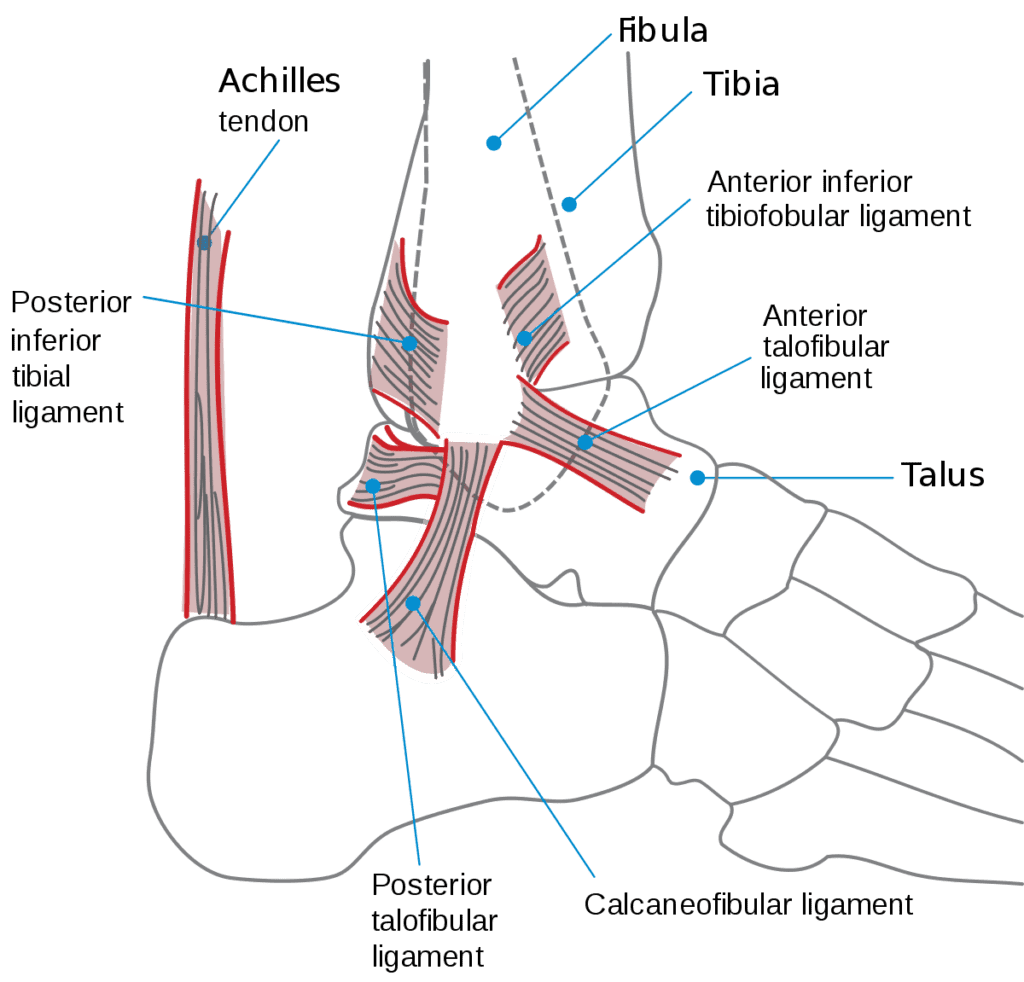
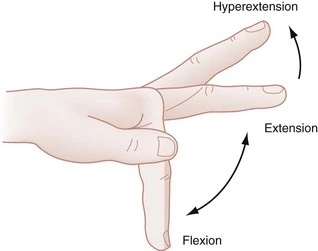

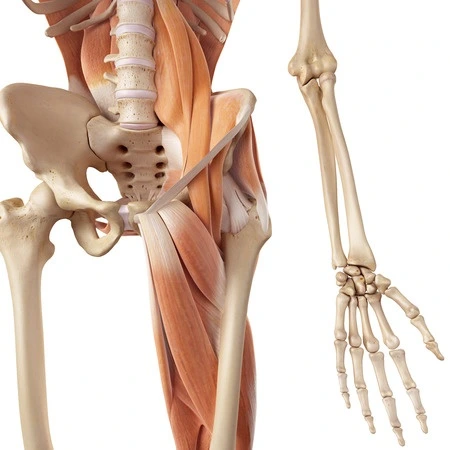

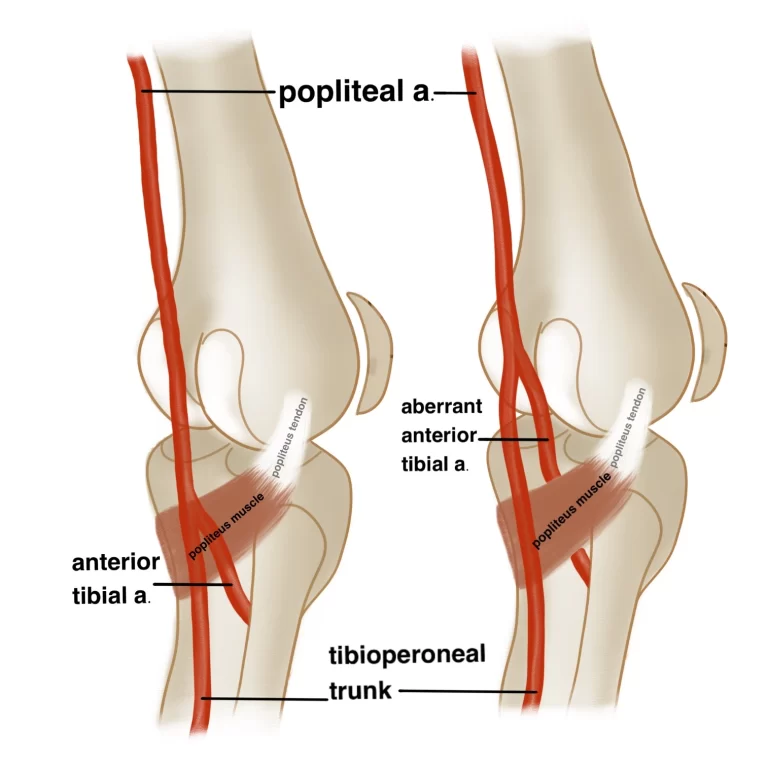
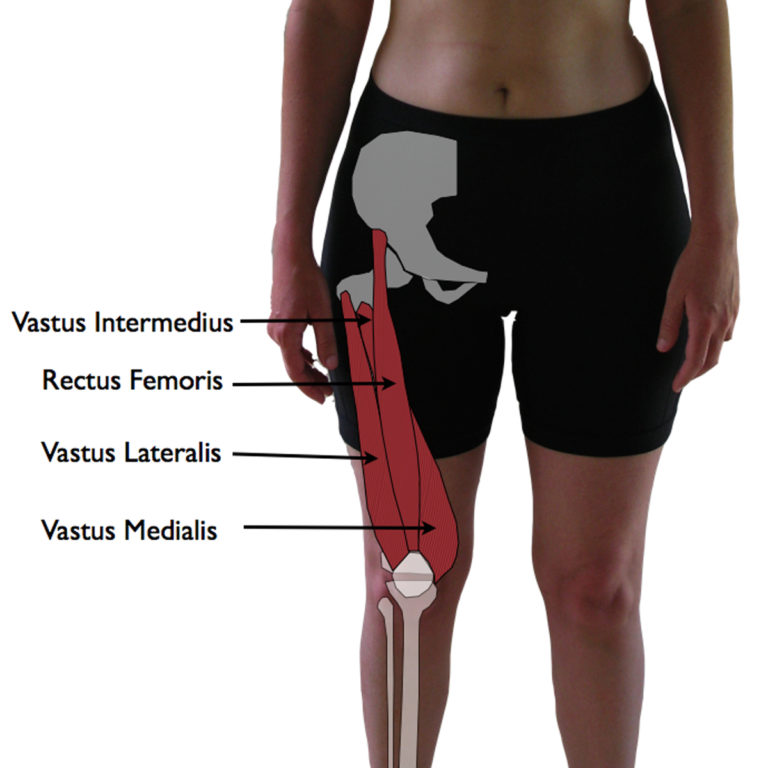
One Comment